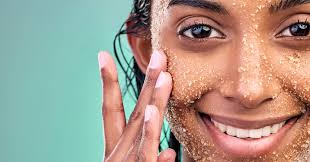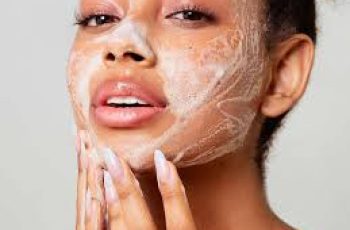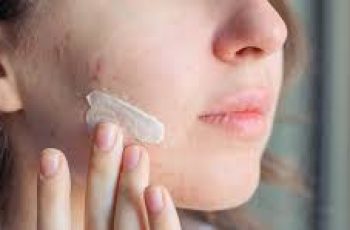
How Chemical Exfoliation Works to Perfect Your Skin
Chemical exfoliation has become a cornerstone of modern skincare routines, replacing traditional manual scrubs. Acids like AHAs (Alpha Hydroxy Acids) and BHAs (Beta Hydroxy Acids) have proven to be incredibly effective for improving skin texture, brightness, and overall appearance. But how exactly do these acids work, and how can they benefit your skin? Let’s break it down.
What is Chemical Exfoliation?
Chemical exfoliation refers to the use of acids or enzymes to dissolve dead skin cells, excess oil (sebum), and accumulated dirt that can clog pores. Unlike physical exfoliants (like scrubs or brushes), which rely on friction to manually slough off skin, chemical exfoliants use the power of active ingredients to gently break down the bonds between dead skin cells. This allows for a smoother, more even skin texture with reduced risks of irritation and microtears caused by harsh scrubbing.
Chemical exfoliation not only helps to improve the texture and appearance of your skin but can also address various skin concerns, such as acne, dullness, hyperpigmentation, and fine lines.
How Do Chemical Exfoliants Work?
When applied to the skin, chemical exfoliants penetrate deeper layers and dissolve the bonds holding dead skin cells together. This helps to slough off the outer layers of the skin, revealing a fresher, smoother, and more even complexion. But it’s not just about exfoliating the surface:
AHAs (Alpha Hydroxy Acids)
Target the outermost layers of the skin, working primarily on the epidermis (the top layer).
These acids promote skin renewal, brighten the complexion, and help reduce the appearance of fine lines and wrinkles.
Common AHAs include glycolic acid, lactic acid, and malic acid.
BHAs (Beta Hydroxy Acids)
Penetrate deeper into the pores than AHAs, making them particularly beneficial for oily, acne-prone skin.
BHAs, such as salicylic acid, help clear out clogged pores, reducing the formation of blackheads and blemishes by dissolving the oil and debris trapped inside.
They also have anti-inflammatory properties, which help reduce redness and irritation.
While the thought of applying acids to your face might sound intimidating, they are formulated in a way that makes them safe and effective when used as directed. Unlike physical exfoliants that can cause microtears, chemical exfoliants provide a more uniform, gentle exfoliation that can lead to smoother, healthier-looking skin.
Types of Chemical Exfoliants
Chemical exfoliants come in various forms, each with unique properties that cater to different skin types and concerns. Here are the most common types of acids used in exfoliating products:
1. Glycolic Acid (AHA)
Derived from sugar cane, glycolic acid is the most potent AHA and works well for normal to oily skin types.
It helps exfoliate, clear clogged pores, and reduce the appearance of fine lines and hyperpigmentation.
Best for: Removing dead skin cells, improving skin texture, and treating dullness.
2. Malic Acid (AHA)
A lesser-known AHA, malic acid is derived from apples and is often combined with other acids to boost effectiveness.
It is a gentler acid, making it suitable for those with sensitive skin.
Best for: Revitalizing dull skin and enhancing skin radiance.
3. Lactic Acid (AHA)
Found in milk, lactic acid is considered one of the gentler AHAs, making it ideal for dry or sensitive skin types.
It works by hydrating the skin while removing dead skin cells, providing gentle exfoliation.
Best for: Sensitive or dry skin types in need of exfoliation and hydration.
4. Salicylic Acid (BHA)
A fat-soluble acid, salicylic acid penetrates deeply into pores, making it highly effective for acne-prone and oily skin.
It unclogs pores, reduces blackheads, and helps treat inflammatory acne by targeting the bacteria and oil inside the pores.
Best for: Preventing acne and treating breakouts by deeply exfoliating inside the pores.
How to Use Chemical Exfoliants Safely
To get the most out of your chemical exfoliation routine, it’s important to understand how to use these products correctly. Overuse or incorrect application can lead to irritation, sensitivity, or dryness. Here’s how to incorporate them into your skincare routine:
1. Start Slow
If you’re new to chemical exfoliation, begin with products that contain lower concentrations of acids. Start by using the product 2-3 times a week and gradually increase frequency based on how your skin reacts.
2. Choose the Right Formulation
Chemical exfoliants come in various forms such as cleansers, toners, serums, and masks. Choose the one that works best for your skin:
Face Wash: Typically contains lower concentrations of acids, making it safe for daily use.
Toner: Often contains higher concentrations of AHAs or BHAs, and is best used 2-3 times a week at first.
Serums: These are concentrated, so follow the instructions on the product and adjust according to your skin’s tolerance.
Face Masks: Limit to 2-3 times a week to avoid over-exfoliation.
3. Always Follow with Sunscreen
Chemical exfoliation can make your skin more sensitive to the sun, so always apply a broad-spectrum sunscreen with SPF 30 or higher after exfoliating.
Can You Use a Face Mask After Chemical Exfoliation?
Using a face mask right after chemical exfoliation can be beneficial if the mask is hydrating or soothing. However, you should avoid masks with additional acids or harsh ingredients right after exfoliating, as this can lead to irritation.
Hydrating masks are ideal, as they will help replenish moisture that may have been stripped away during exfoliation.
Wait about 20 minutes after applying your chemical exfoliant to allow your skin to recover before applying any mask or moisturiser.
Can Chemical Exfoliants Be Used Around the Eyes?
The skin around the eyes is more delicate and thinner than the rest of your face. Strong chemical exfoliants, like glycolic or salicylic acid, should generally not be used around the eyes due to the risk of irritation.
However, milder formulas with lower concentrations of AHAs, or hydrating ingredients like hyaluronic acid, can be safer options for the under-eye area.
How Quickly Can You See Results?
The results of chemical exfoliation depend on several factors, such as your skin type, the strength of the acid used, and how consistently you apply it. That said, you may notice:
Smoother skin and a brighter complexion within a week of consistent use.
Reduction in blemishes and improved texture after 2-4 weeks.
Diminishing fine lines and even skin tone over 1-3 months of regular use.
It’s important to be patient and consistent, as exfoliation is an ongoing process that can significantly improve skin over time.
Understanding Oily Skin and How to Manage It
Oily skin occurs when the sebaceous glands produce too much sebum (skin oil). While excess sebum can lead to clogged pores, enlarged pores, and acne, oily skin has its benefits—such as a slower aging process and fewer wrinkles.
What Causes Oily Skin?
Several factors can contribute to excess oil production:
Genetics: Some people are genetically predisposed to having oilier skin.
Hormones: Changes in hormone levels, such as during puberty, menstruation, or pregnancy, can increase sebum production.
Diet: Eating greasy or highly processed foods may exacerbate oil production.
Stress: Stress triggers hormonal fluctuations that can lead to more oil production.
How to Manage Oily Skin
To maintain balance in oily skin and avoid breakouts, you need a skincare routine that controls oil without stripping the skin’s natural moisture:
Cleansing: Use a gentle, non-drying cleanser with salicylic acid or glycolic acid to target oil and prevent clogged pores.
Toning: Avoid astringents with alcohol. Instead, use soothing toners with ingredients like witch hazel.
Moisturizing: Even oily skin needs hydration. Use oil-free moisturizers with lightweight, gel-based formulas.
Exfoliation: Exfoliate 1-2 times a week to remove excess sebum, dead skin cells, and prevent blocked pores.
Dealing with Oily Skin Breakouts
Excess oil combined with dead skin cells can clog pores and cause acne. Salicylic acid is particularly effective at clearing out blocked pores and reducing acne-related inflammation.
Preventing Daytime Oil Build-Up
Throughout the day, oily skin tends to produce more sebum, leading to shine. To keep it under control:
Use a mattifying primer or oil-absorbing powder.
Carry blotting papers to remove excess shine without disturbing your makeup.
Moisturizing Oily Skin
It may seem counterintuitive, but oily skin needs moisturization too. Use oil-free moisturizers that hydrate the skin without contributing to excess oil production. Look for formulas that contain hyaluronic acid, which hydrates without making your skin feel greasy.
Can Face Oils Be Used on Oily Skin?
Yes! While it seems counterproductive, certain oils can actually benefit oily skin by balancing oil production. Opt for oils like tea tree oil (great for acne) or rosehip oil (hydrating and soothing), and avoid comedogenic oils (like coconut oil), which can clog pores.
Final Thoughts
Chemical exfoliation is a fantastic way to improve skin texture, brighten your complexion, and target specific skin concerns. By understanding how these acids work and how to incorporate them safely into your skincare routine, you can achieve smoother, healthier-looking skin. For oily or acne-prone skin, combining chemical exfoliants with the right skincare regimen will help balance oil production and keep breakouts at bay.
Be consistent with your routine, use the right products, and always remember that results take time. Happy exfoliating!


